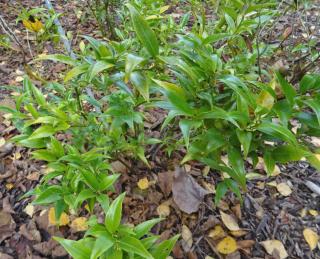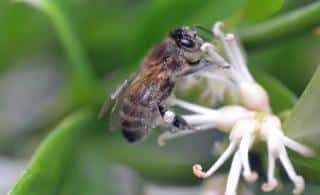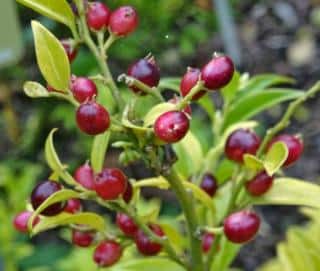

Sweet box is a beautiful shrub with a surprising name that produces beautiful winter blooms.
Basic Sweet box facts
Name – Sarcococca
Family – Buxaceae
Type – shrub
Height – extremely variable, maximum 13 feet (4 meters)
Soil – ordinary
Exposure – sun and part sun
Foliage – evergreen
Flowering – January to March
It is very much appreciated for the fragrance that its flowers release. Related to boxwood, which makes it great for hedges.
For sweet box, planting is either in fall or in spring but avoid frost spells and high temperatures.
In the first case, settling in is easier, and in the second case, you’ll need to water regularly after having planted your sweet box.
This shrub abhors cold winds and damp soil, especially clay soil that gets waterlogged in winter.
 For sweet box planted in the ground, if you wish to grow a low-lying hedge, your 6 to 8 inch (15 to 20 cm) sweet box specimens should be planted 8 to 10 inches (20 to 25 cm) apart.
For sweet box planted in the ground, if you wish to grow a low-lying hedge, your 6 to 8 inch (15 to 20 cm) sweet box specimens should be planted 8 to 10 inches (20 to 25 cm) apart.Sweet box is a shrub that requires very little work. Pruning is the only care that is actually needed, and even this can be converted from chore to passion, when the art of topiary is mastered!
Easy to care for, sweet box thus doesn’t need any care other than pruning, and even that isn’t mandatory.
There are no known sweet box diseases or parasites.
Sweet box growing directly in the ground resists drought well, but potted sweet box quickly suffers in case of dry spell. Forgetting to water it could spell its death.
Watering potted sweet box
Watering sweet box when planted in the ground

The most widespread sweet box variety is confusa that can grow up to 6 ½ feet (2 meters) tall.

Thanks to its tiny leaves, tightly bound together, this shrub is like a material that truly can be sculpted. Pruning and topiary is for some among us a passion that leads to amazing works of art.
Its hard wood and leathery leaves give it an extended longevity.
Sweet box is perfectly suited to growing in pots or in garden boxes for terraces and balconies.
It will thus decorate your deck and garden magnificently, and will survive the winter without giving you any problems…